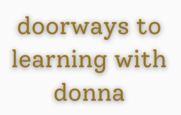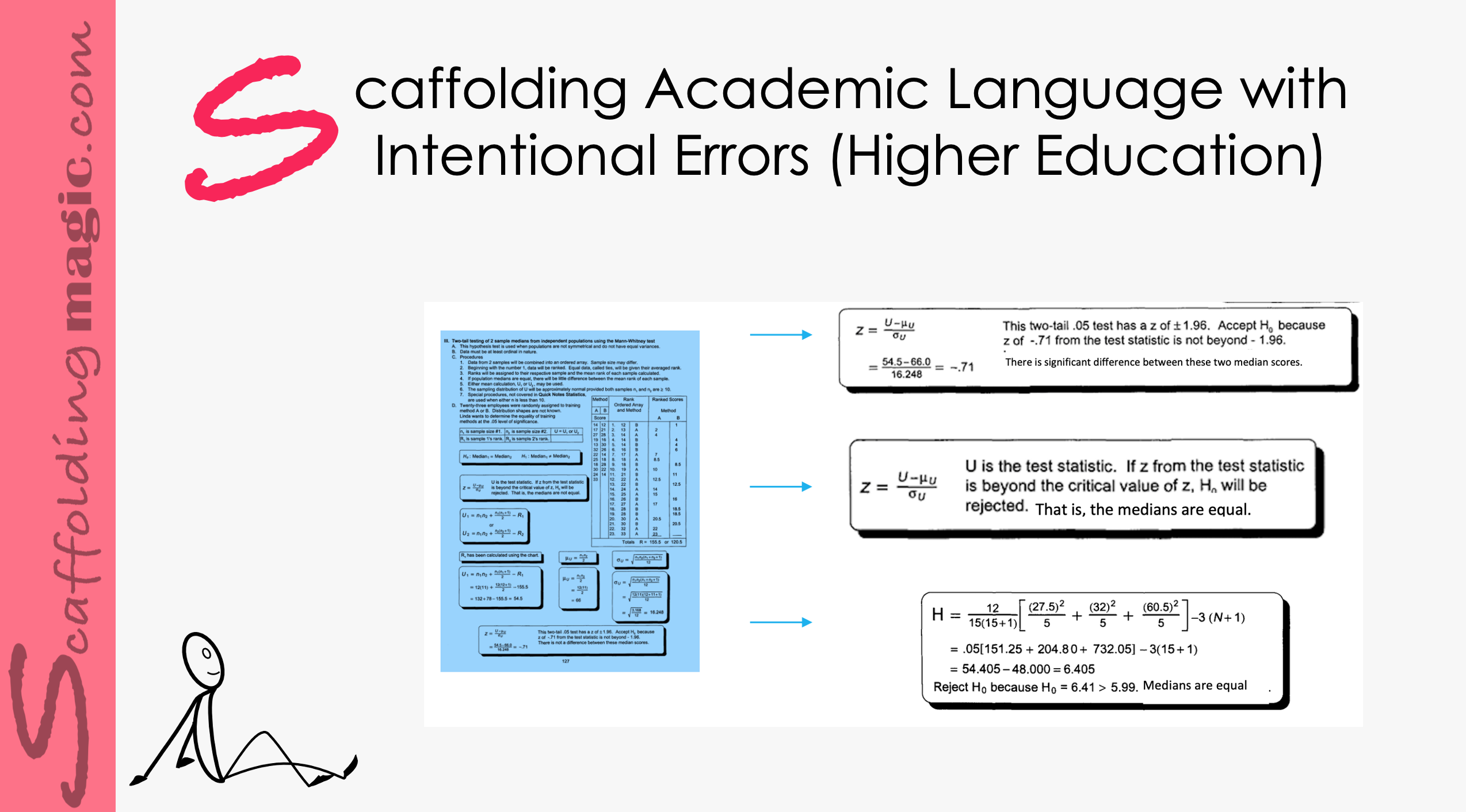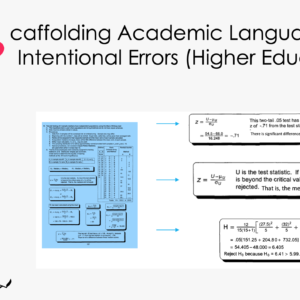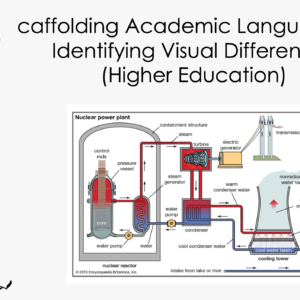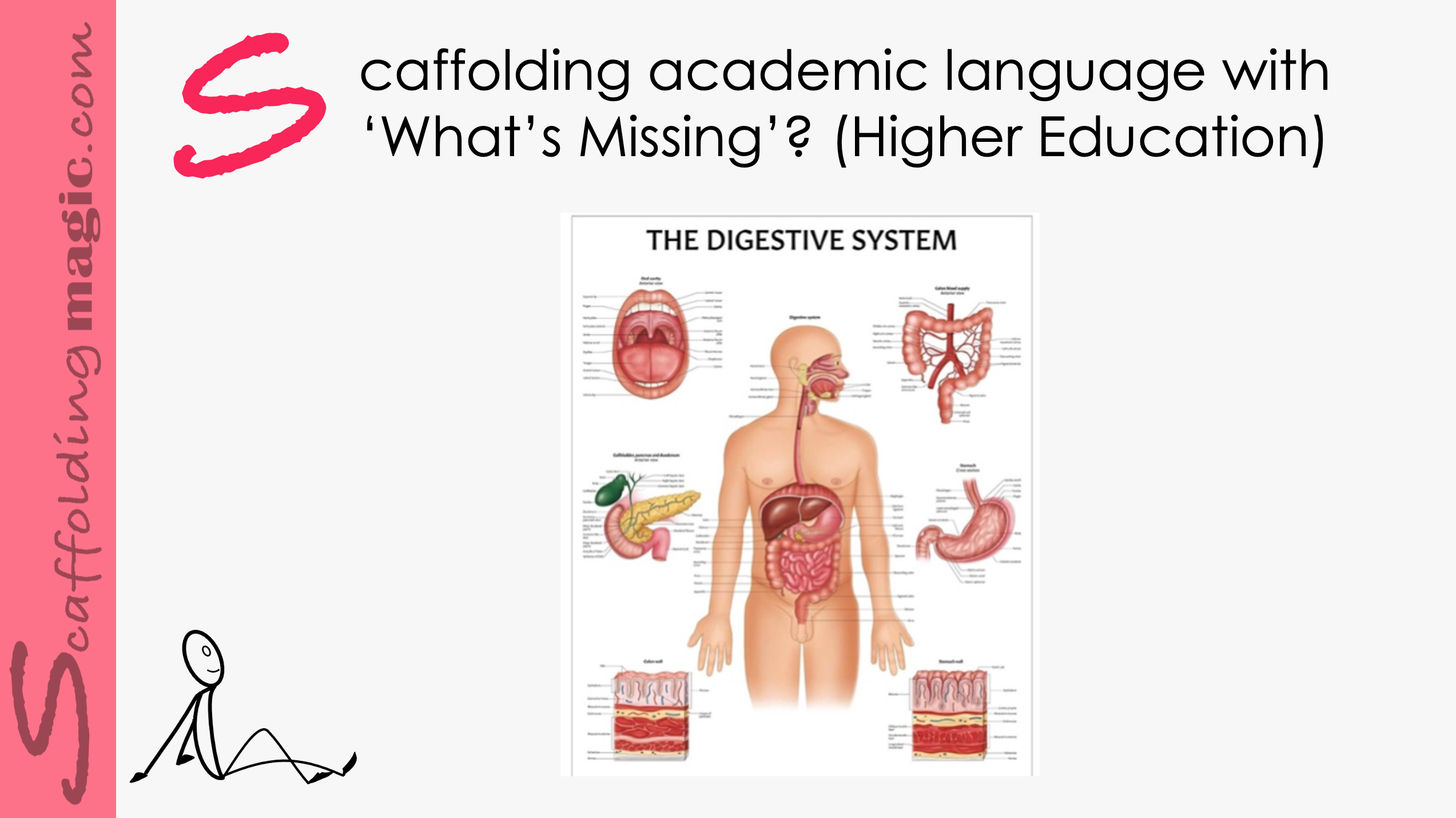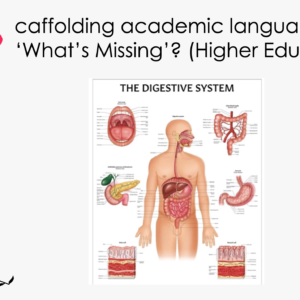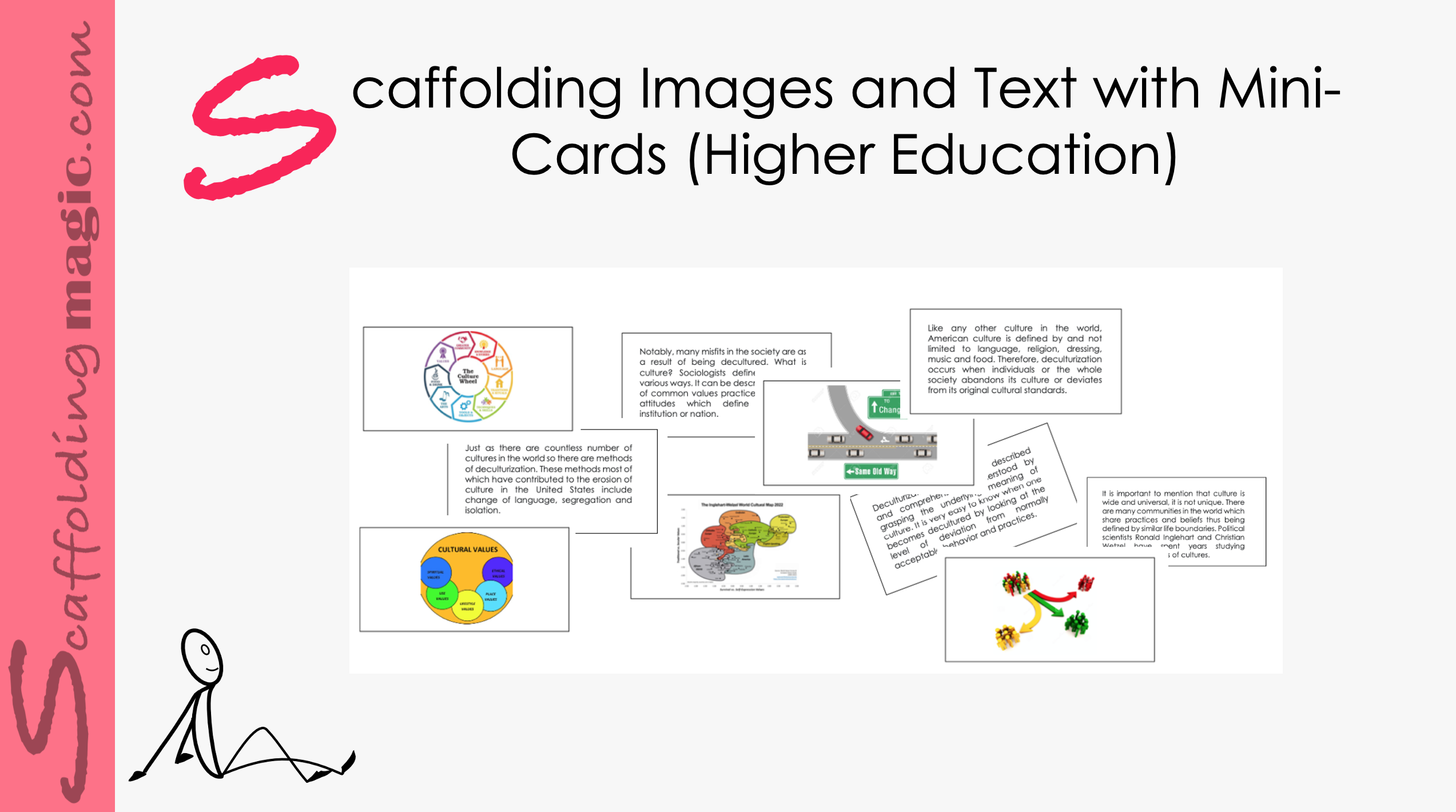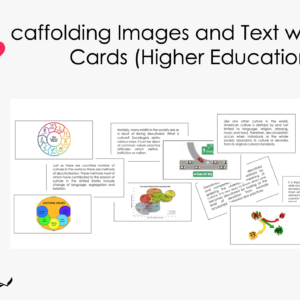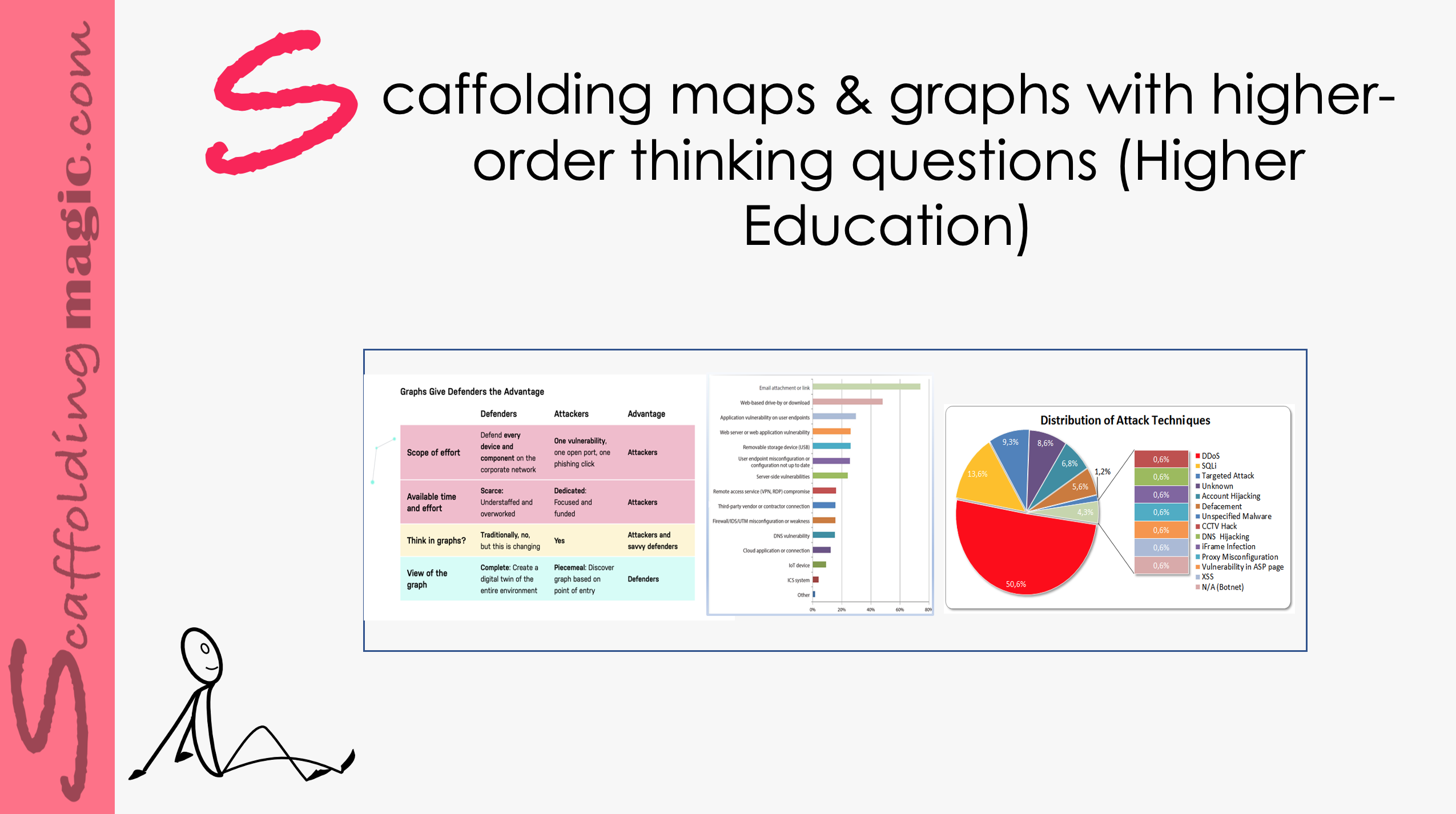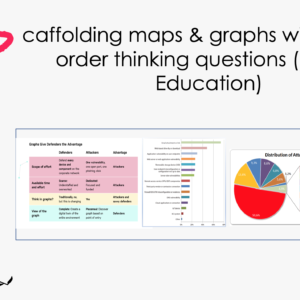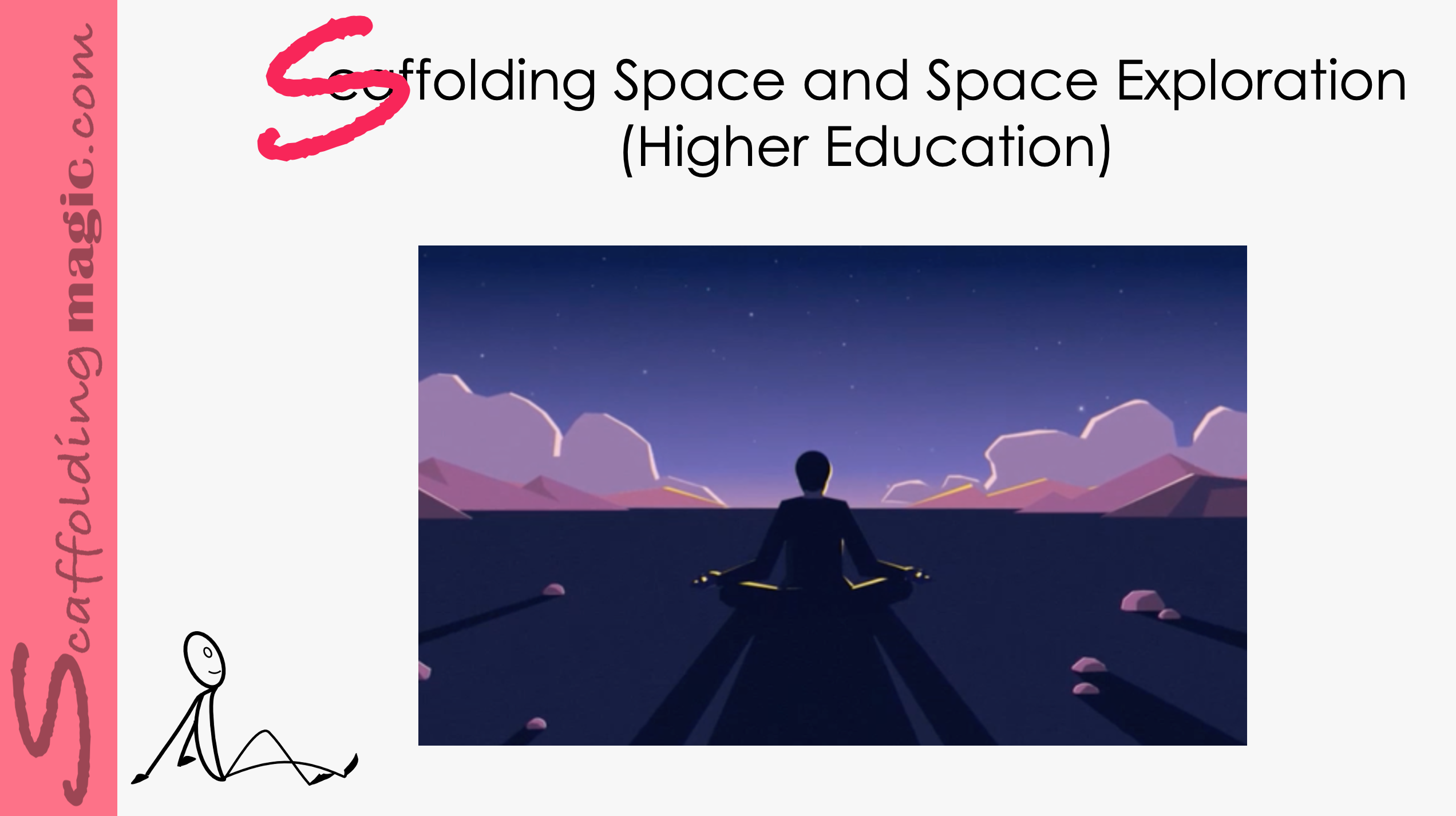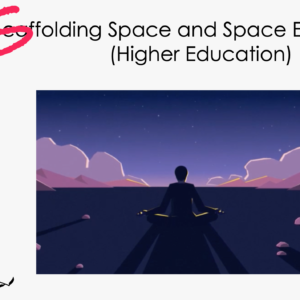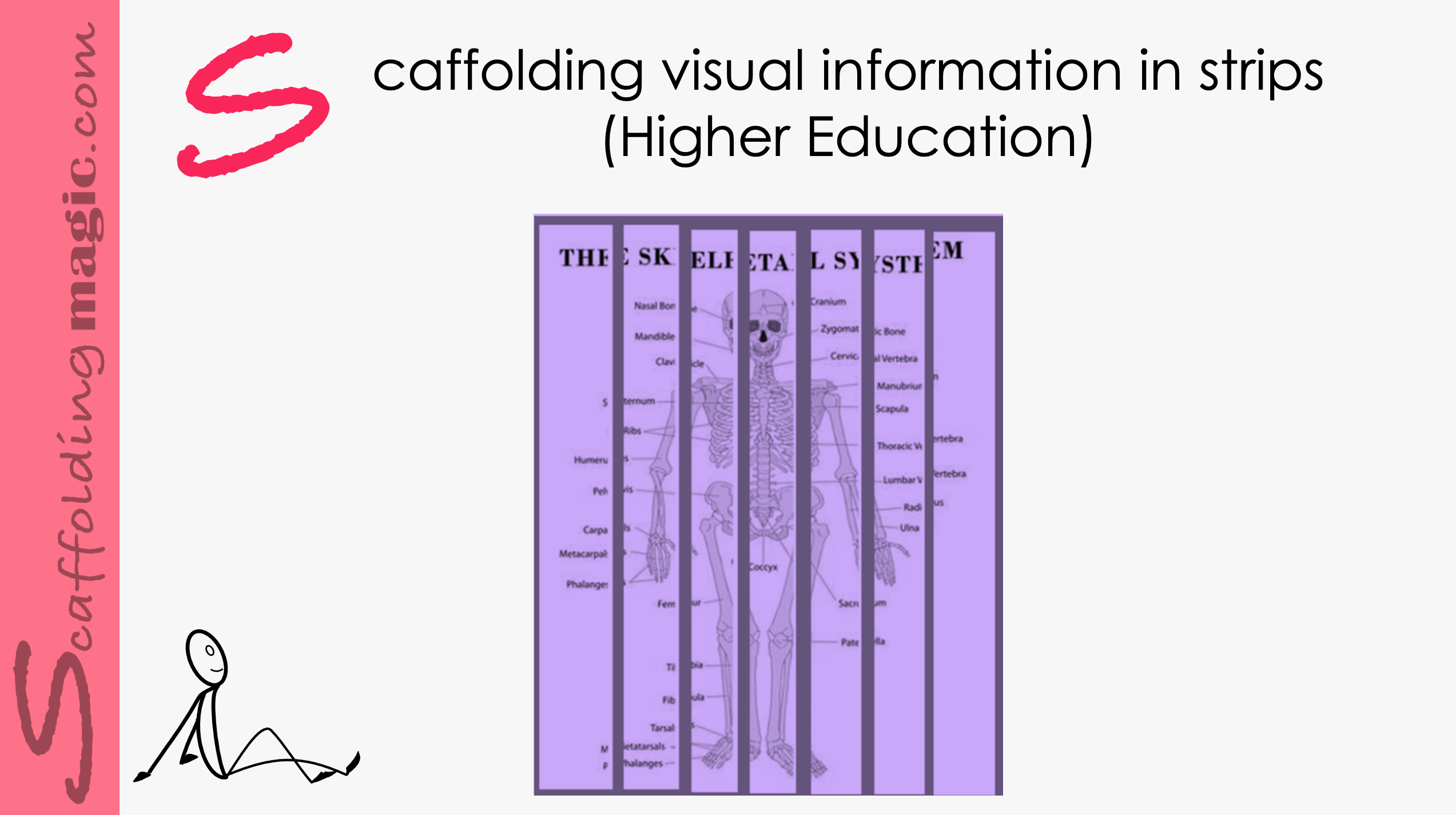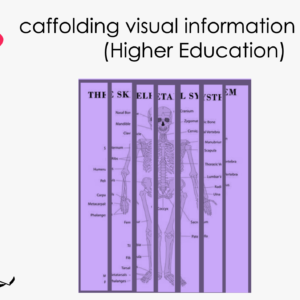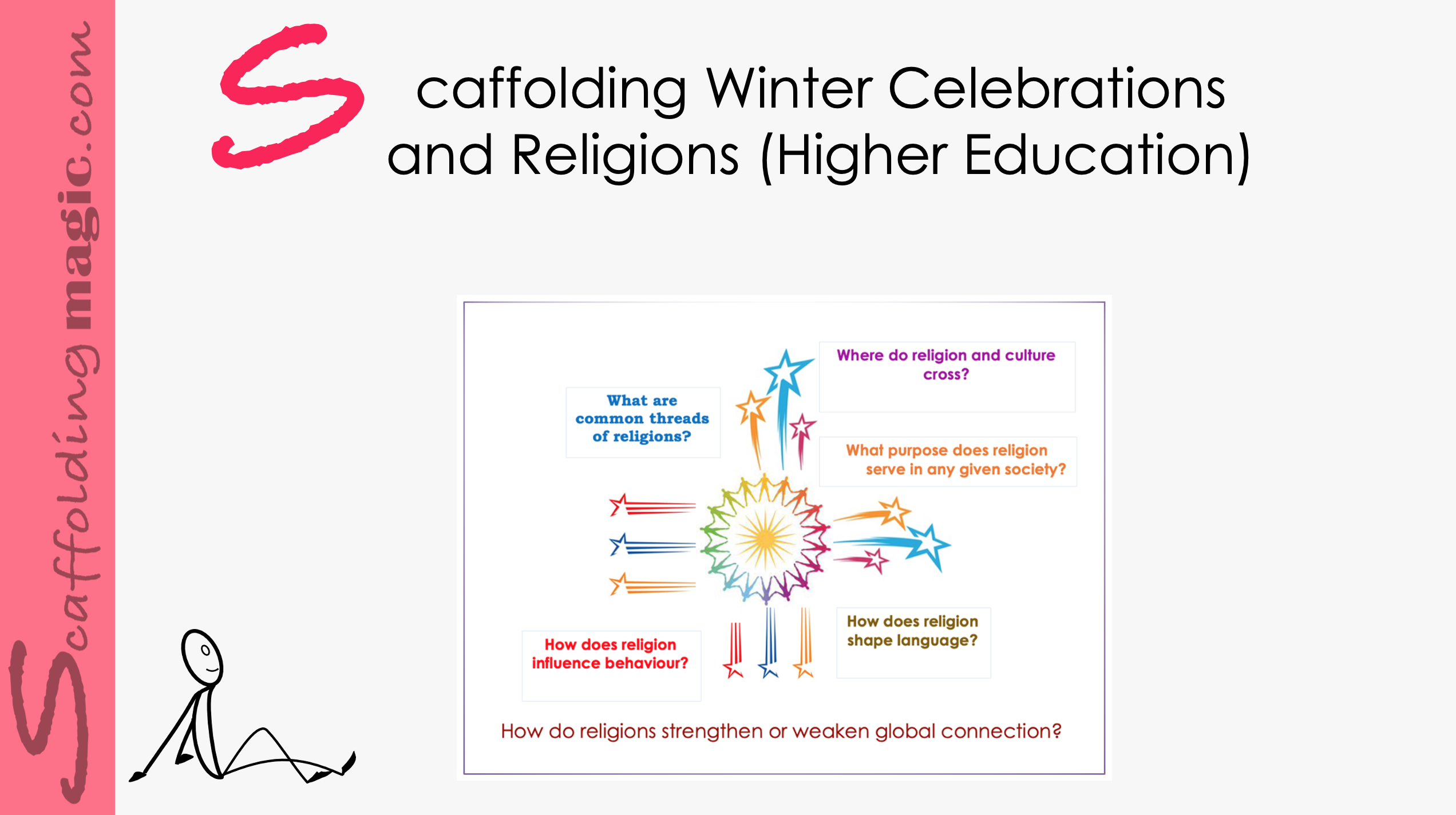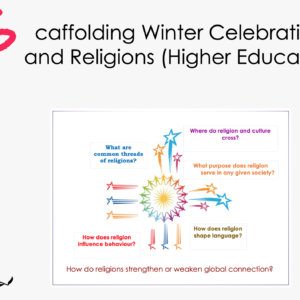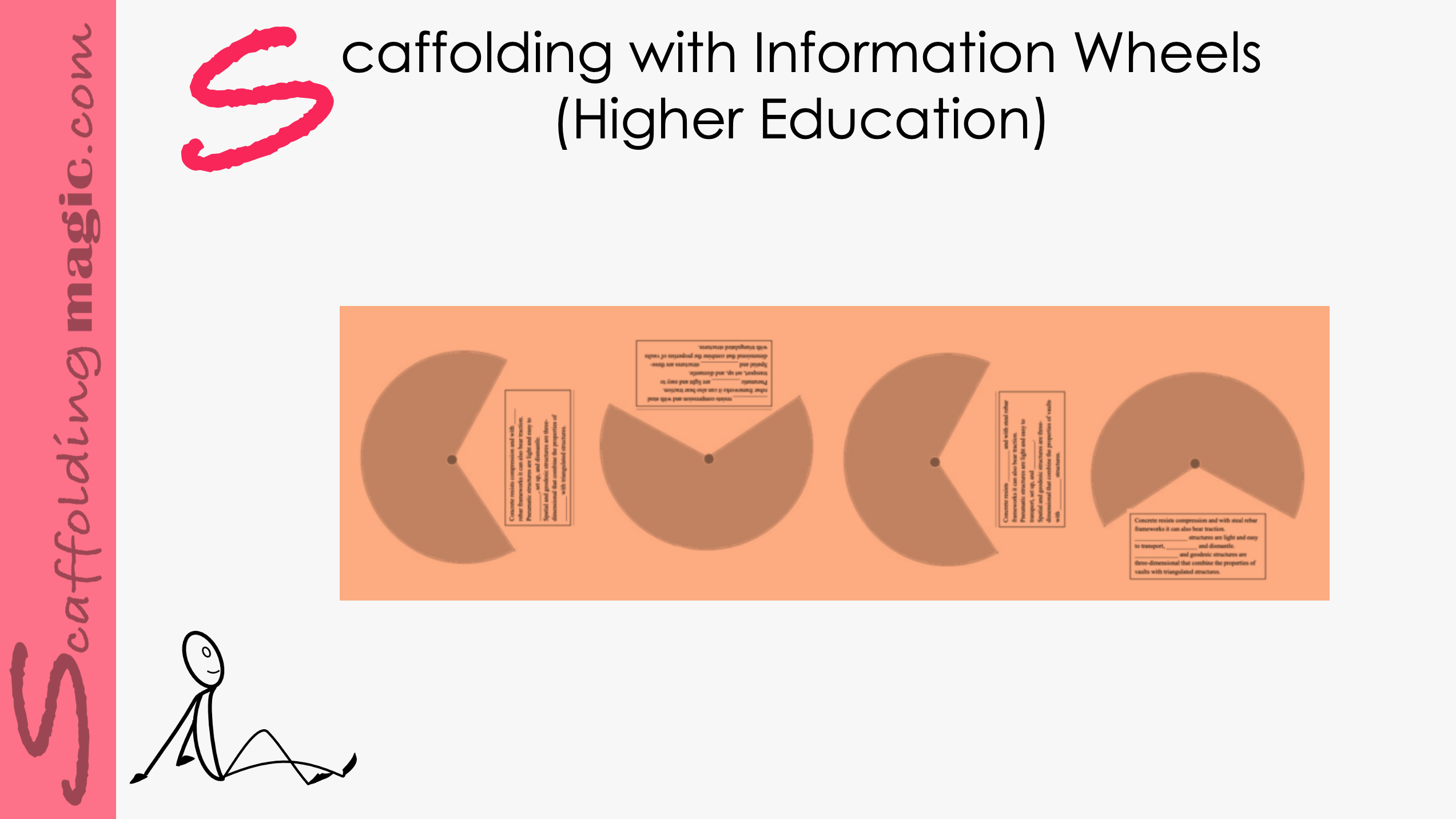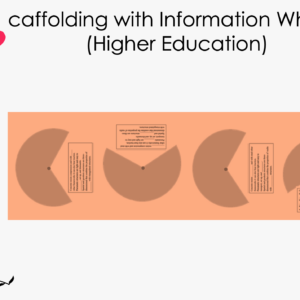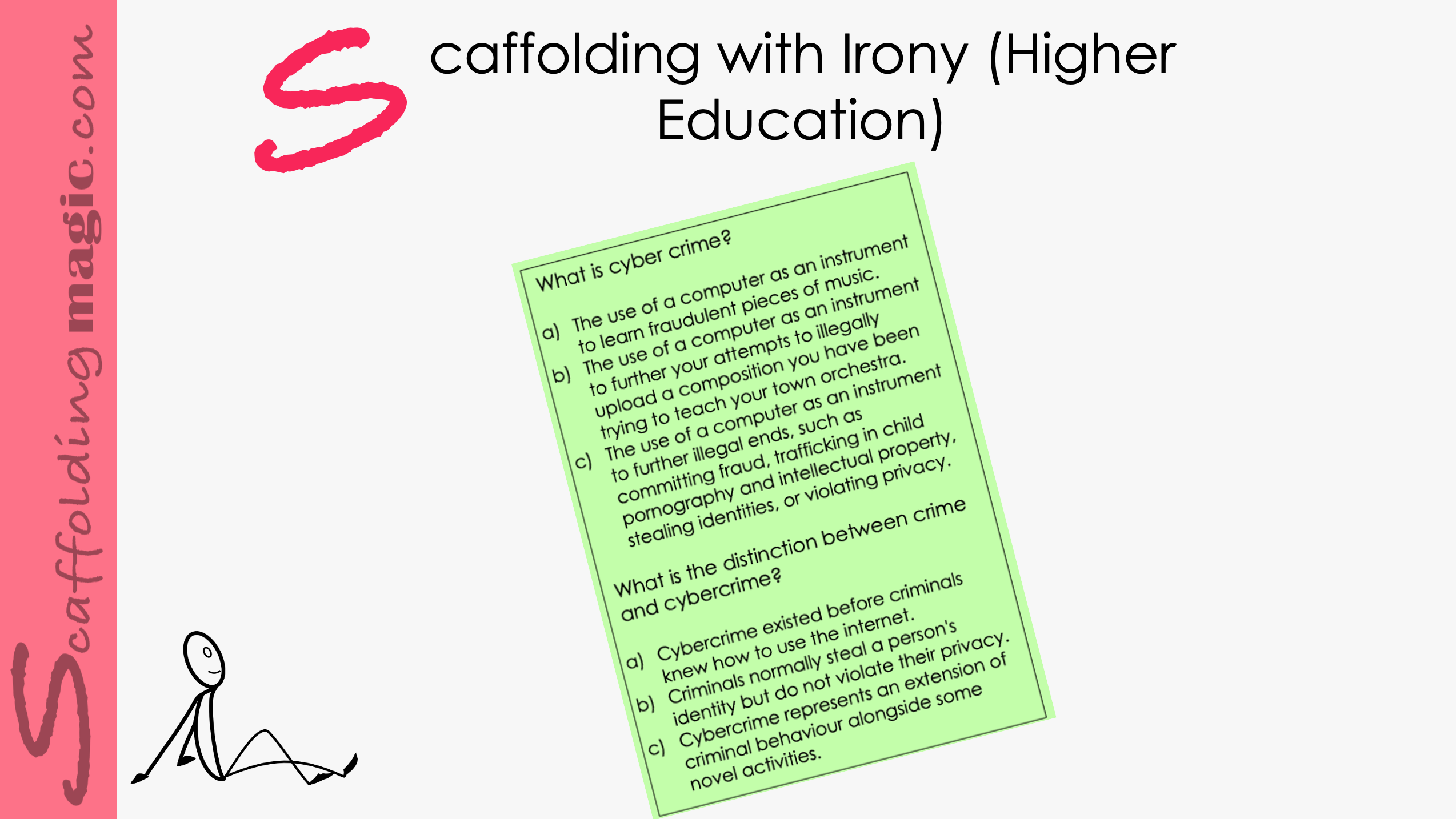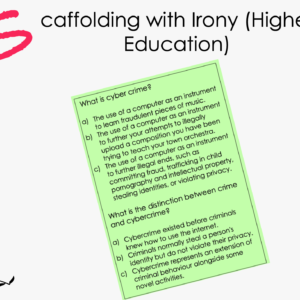Higher Education Scaffolds
Showing all 12 results
- Quick View
-
Higher Education ScaffoldsQuick View
Scaffolding Academic Language – through errors (higher education)
$5.00 Add to cart -
Higher Education ScaffoldsQuick View
Scaffolding Academic Language by Identifying Visual Differences (Higher Education)
$5.00 Add to cart -
Higher Education ScaffoldsQuick View
Scaffolding Academic Language with ‘What’s Missing?’ (Higher Education)
$5.00 Add to cart -
Higher Education ScaffoldsQuick View
Scaffolding by Enriching the Sequencing Dynamic (Higher Education)
$5.00 Add to cart -
Higher Education ScaffoldsQuick View
Scaffolding Images and Text with Mini-Cards (Higher Education)
$5.00 Add to cart -
Higher Education ScaffoldsQuick View
Scaffolding Maps and Graphs with Higher-Order Level Questions (Higher Education)
$5.00 Add to cart -
Higher Education ScaffoldsQuick View
Scaffolding space & space exploration (higher education)
$5.00 Add to cart -
Higher Education ScaffoldsQuick View
Scaffolding Visual Information in Strips (Higher Education)
$5.00 Add to cart -
Higher Education ScaffoldsQuick View
Scaffolding winter celebrations & religions (Higher Education)
$5.00 Add to cart - Quick View
- Quick View
Janice’s new product for testing
Now on to the short description with a pdf added to the product gallery
I want to see how this will show up, so I’ve added a new product to play with.
How do the images appear, etc.
Scaffolding Academic Language – through errors (higher education)
The brain sparks and grows when we make mistakes – even if we are not aware of it – because it is a time of struggle; the brain is challenged, and so this is when it grows the most.* Errors need to be celebrated in our classroom; we need to help our students to embrace the effort they make in their studies and focus on mistakes and successes alike, and not only the outcomes.
The brain sparks and grows when we make mistakes – even if we are not aware of it – because it is a time of struggle; the brain is challenged, and so this is when it grows the most.* Errors need to be celebrated in our classroom; we need to help our students to embrace the effort they make in their studies and focus on mistakes and successes alike, and not only the outcomes.
Scaffolding Academic Language by Identifying Visual Differences (Higher Education)
Creating opportunities for our students to use academic terms and phrases while analysing, comparing, categorising, and defending their own ideas, triggered by the search for visual differences in an educational resource you’ve manipulated.
Creating opportunities for our students to use academic terms and phrases while analysing, comparing, categorising, and defending their own ideas, triggered by the search for visual differences in an educational resource you’ve manipulated.
Scaffolding Academic Language with ‘What’s Missing?’ (Higher Education)
This scaffold address the importance of academic language, which is so important that experts assert that the warehouse of words a person has stored away is directly connected to their quality of thinking: higher quality of words equals higher quality of thinking.** In this age of the Fourth Industrial Revolution, the quality of thinking our students reach in our classes, will be the difference between being qualified for jobs that technology is (still) not capable of performing, and watching the world from the sidelines.
This scaffold address the importance of academic language, which is so important that experts assert that the warehouse of words a person has stored away is directly connected to their quality of thinking: higher quality of words equals higher quality of thinking.** In this age of the Fourth Industrial Revolution, the quality of thinking our students reach in our classes, will be the difference between being qualified for jobs that technology is (still) not capable of performing, and watching the world from the sidelines.
Scaffolding by Enriching the Sequencing Dynamic (Higher Education)
Knowing the sequence of events in a text, story, video, laboratory experiment, sports competition, musical composition, preparation of art materials, etc. is an essential skill for students. This is an integral part of Pre-school and Lower-Primary school lessons, but it is often forgotten in higher grades. We need to intentionally give our students the opportunities to be able to recognise and express sequences, and we need to provide the phrases they can use to clarify the ordering of events.
Knowing the sequence of events in a text, story, video, laboratory experiment, sports competition, musical composition, preparation of art materials, etc. is an essential skill for students. This is an integral part of Pre-school and Lower-Primary school lessons, but it is often forgotten in higher grades. We need to intentionally give our students the opportunities to be able to recognise and express sequences, and we need to provide the phrases they can use to clarify the ordering of events.
Scaffolding Images and Text with Mini-Cards (Higher Education)
In this scaffold, students have the opportunity to develop their linguistic and visual skills as they negotiate connections between text and images. They also interact with the information through temporal and grammatical transformations, as well as bodily-kinesthetic interplay.
We take every opportunity to expand our practice. Whenever possible, we broaden the variety of strategies we use in our classroom activities so that when our students go out into the world, they are more prepared – all because of the extra effort we put into our lessons.
In this scaffold, students have the opportunity to develop their linguistic and visual skills as they negotiate connections between text and images. They also interact with the information through temporal and grammatical transformations, as well as bodily-kinesthetic interplay.
We take every opportunity to expand our practice. Whenever possible, we broaden the variety of strategies we use in our classroom activities so that when our students go out into the world, they are more prepared – all because of the extra effort we put into our lessons.
Scaffolding Maps and Graphs with Higher-Order Level Questions (Higher Education)
Higher-order level questions – those that elicit deeper thinking – help students to stretch their thinking and engage their curiosity, their reasoning ability, their creativity, and independence. These questions encourage students to open their minds, they offer opportunities to produce original thinking.
Higher-order level questions – those that elicit deeper thinking – help students to stretch their thinking and engage their curiosity, their reasoning ability, their creativity, and independence. These questions encourage students to open their minds, they offer opportunities to produce original thinking.
Scaffolding space & space exploration (higher education)
Let’s help students to consider the original motives behind space exploration – controlling direction and purpose of what is possible in space in the future. How important is that goal and is inner exploration more meaningful?
Let’s help students to consider the original motives behind space exploration – controlling direction and purpose of what is possible in space in the future. How important is that goal and is inner exploration more meaningful?
Scaffolding Visual Information in Strips (Higher Education)
When we add strategies in activities that promote critical thinking, collaboration, negotiation and prediction – all through visual means – we’ve created a powerful means of presenting new ideas to our students. This scaffold technique also includes categorisation which, according to Morton Hunt*, one of the pioneers of the study of the mind, has been proven to yield educational efficiency and helps the brain process information more fluidly.
Scaffolding winter celebrations & religions (Higher Education)
This scaffold helps educators to address the focus of multicultural winter celebrations. It encourages students to separate the dogma of celebrations and religions from the intention, to recognise traditional practices common in many religion (in other words, see the similarities), and to negotiate with their classmates the relevance (or irrelevance) of religions in the present.
This scaffold helps educators to address the focus of multicultural winter celebrations. It encourages students to separate the dogma of celebrations and religions from the intention, to recognise traditional practices common in many religion (in other words, see the similarities), and to negotiate with their classmates the relevance (or irrelevance) of religions in the present.
Scaffolding with Information Wheels (Higher Education)
Using information wheels in lessons is a wonderful way of honouring our students who need to learn through kinesthetic interaction. With information wheels, your students will use deductive reasoning, negotiate meaning, activate long-term memory, and learn new subject matter, all at the same time. Because they will be interacting with information with their hands, they’ll benefit from the essential transition from social-to-exploratory-to dialogic-to presentational-and…finally…to meta learning.*
Using information wheels in lessons is a wonderful way of honouring our students who need to learn through kinesthetic interaction. With information wheels, your students will use deductive reasoning, negotiate meaning, activate long-term memory, and learn new subject matter, all at the same time. Because they will be interacting with information with their hands, they’ll benefit from the essential transition from social-to-exploratory-to dialogic-to presentational-and…finally…to meta learning.*
Scaffolding with Irony (Higher Education)
Adding humour to a lesson is always a recipe for success. Humour changes the dynamic of the class and helps students to see their lessons with a different frame of mind. This scaffold uses irony – the highest form of humour – to help make potentially dry material more inviting and accessible.
Adding humour to a lesson is always a recipe for success. Humour changes the dynamic of the class and helps students to see their lessons with a different frame of mind. This scaffold uses irony – the highest form of humour – to help make potentially dry material more inviting and accessible.
